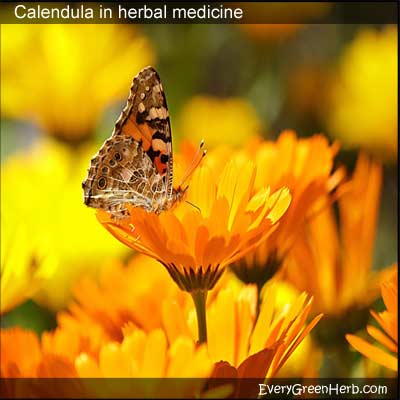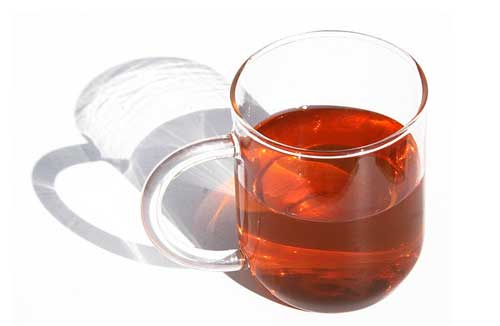Calendula in herbal medicine

Calendula (Calendula officinalis) flower petals are full of healthy antioxidants and flavonoids. The petals are often used in herbal teas and other herbal products.
Calendula is a natural remedy.
Calendula, also known as pot marigold, is used externally as a natural remedy for skin problems, acne, eczema, sunburn, chapped lips, bed sores, shingles, cuts, scrapes, bruises, and varicose veins.
It is occasionally used internally for various complaints including esophagus inflammation, ulcers, gum disease, sluggish digestion, nausea, gastritis, headache, fever, depression, candidiasis overgrowths, and yeast infections.
Calendula is also used to treat tumors, skin ulcers, swelling, inflammation, hemorrhoids, cuts, rashes, bee stings, insomnia, and nervous conditions.
It can be used externally and internally. Calendula tea is useful for treating stomach ulcers, mouth sores, wounds, and more. Calendula can be added to eyewashes, gargles, tinctures, creams, and lotions. It has even proven useful in the treatment of diaper rash.
Using calendula for other common health problems
Calendula does more than help heal the skin. It is astringent, antiseptic, anti-fungal, and anti-inflammatory. Calendula helps regulates menstruation, fights infections, and stimulates bile production.
Studies show that calendula speeds wound healing by increasing blood flow to the wounded area and by helping the body produce collagen proteins (which are used to heal skin and connective tissue).
Many herbalists believe that calendula has anti-cancer and anti-viral properties. Trials are underway to study the effects of calendula when treating herpes, flu viruses, and skin cancer.
Use calendula in teas, lotions, and other preparations.

Calendula flower petals can be used in teas, lotions, ointments, infused oils, mouthwashes, compresses, tinctures, powders, and herbal baths.
Calendula preparations provide numerous benefits. They are healing, help protect the body, and calm the mind.
One tea recipe calls for a heaping tablespoon of dried flower petals per cup of boiling water. Steep for 10 minutes, strain, add a little honey, and enjoy.
Calendula is also available as an essential oil. Calendula essential oil is a valuable addition to the world of aromatherapy where is it used to treat depression and nervous conditions.
Calendula has a long history.
Calendula was named 2008 Herb of the Year by the International Herb Association.
Calendula was well known as a medicinal herb in ancient Greece, India, Egypt, and Arabia (where it was also used as a yellow dye in food, fabrics, and cosmetics).
Calendula plants are easy to grow from seeds
Native to the Mediterranean, calendula is now grown around the world. Calendula plants produce attractive golden or orange flowers that are a favorite among herbalists and gardeners.
Calendula plants bloom throughout the growing season and petals can be harvested as blooms begin to fade. The plant likes full sun and ordinary garden soil.
Calendula is an annual and is easy to grow from seeds – just plant after all danger of frost is past and looks for seedlings to appear almost overnight.
Gather the flowers at their peak bloom. Gently pull the petals from the bitter center part. Use calendula flower petals both fresh and dried.
The spicy-scented petals can be used whole or chopped in many recipes.
Try adding calendula flowers to breads, soups, and salads.
When using calendula, it is important to make sure that the plant is authentic Calendula officinalis and not one of the ornamental marigolds.
*Calendula belongs to the same family as daisies, chrysanthemums, and ragweed. In cases of allergic reaction, discontinue use. Calendula may affect conception when taken by either man or woman, so avoid when trying to get pregnant. Do not use calendula when pregnant or nursing.
Always consult with a healthcare professional before using any herbal remedy especially during pregnancy, while nursing, or while taking prescription medications.
Sources:
https://www.ncbi.nlm.nih.gov/pmc/articles/PMC3841996/
https://www.researchgate.net/publication/319189769_Calendula_Officinalis
Thanks so much for reading my blog. Jan.

*Note - the information on this website has not been evaluated by the Food and Drug Administration.
© 2005-2024 website design and content by Janice Boling